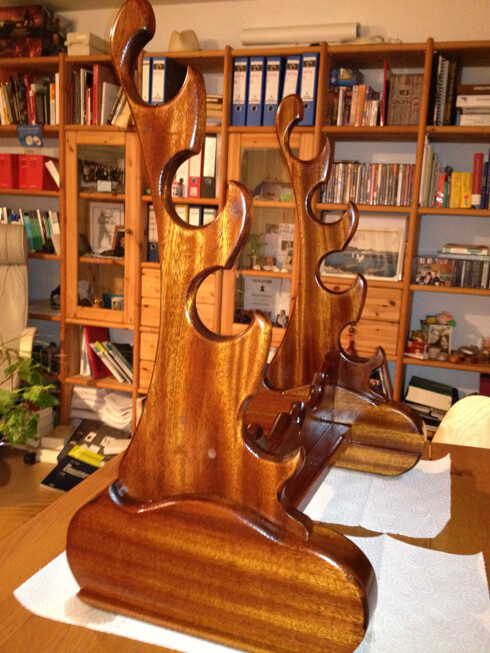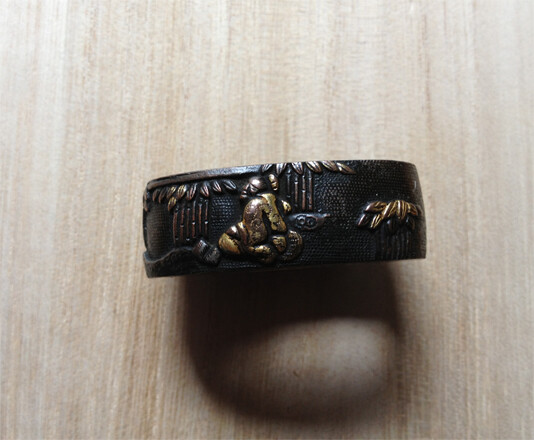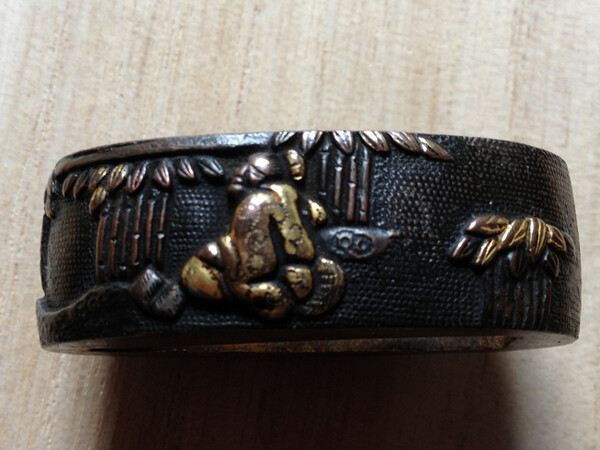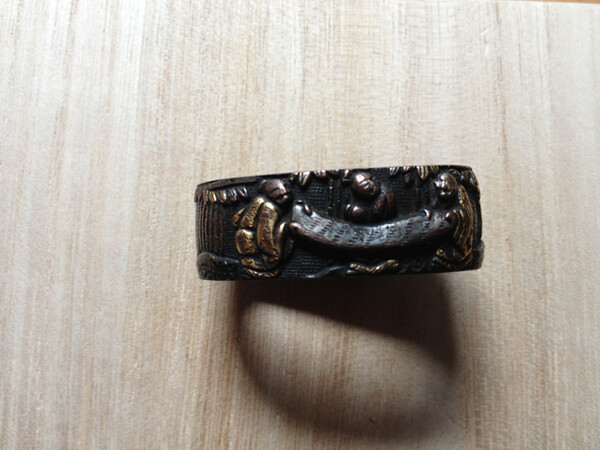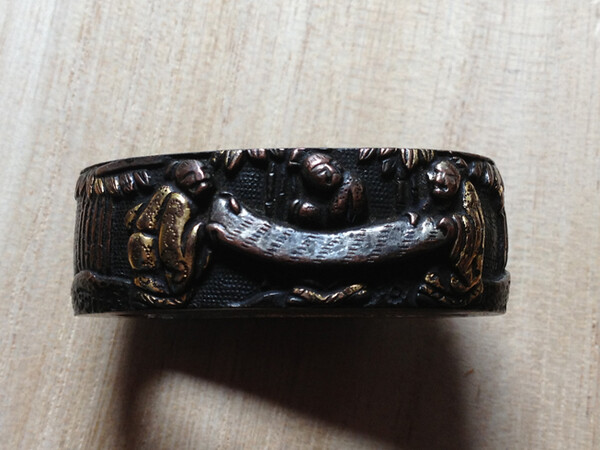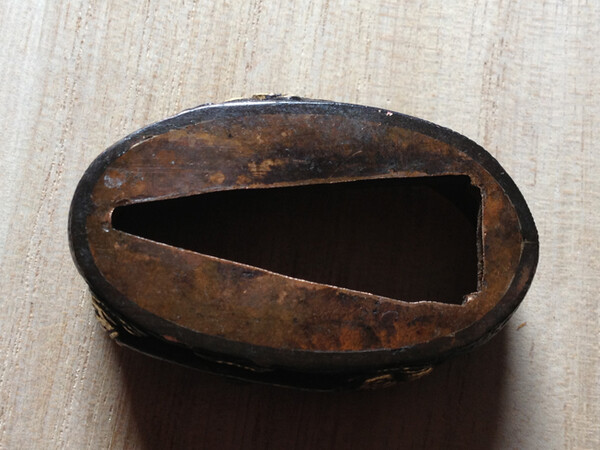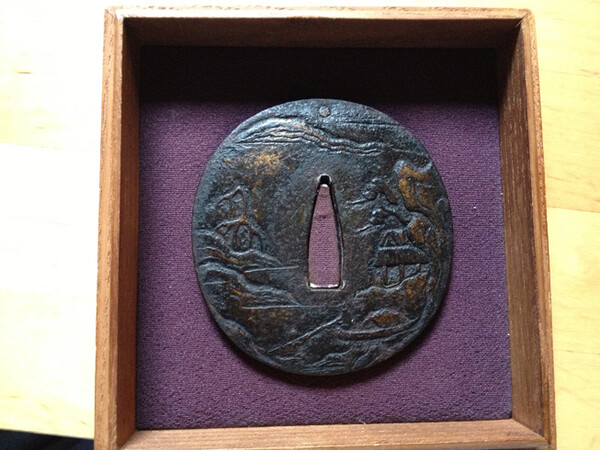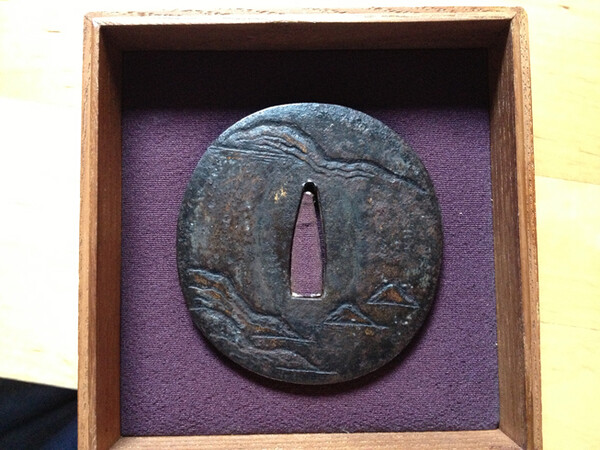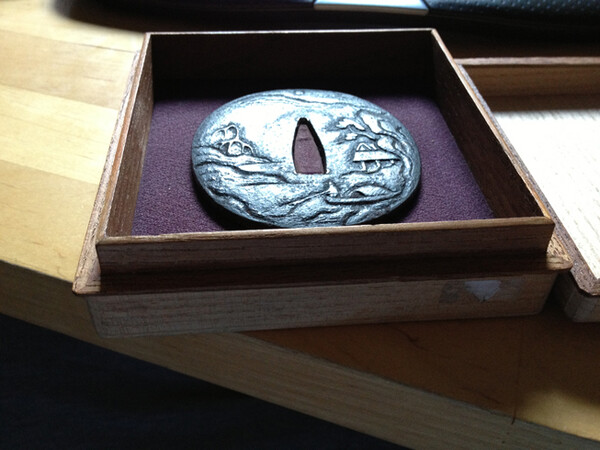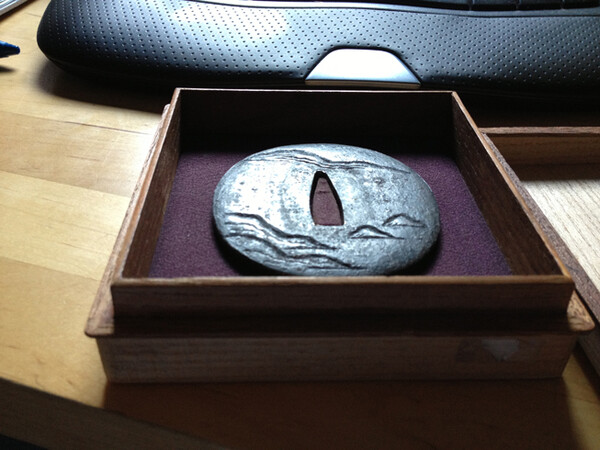-
Posts
44 -
Joined
-
Last visited
Content Type
Profiles
Forums
Events
Store
Downloads
Gallery
Everything posted by KORSH
-
pm sent
-
At first I was afraid it would be to big for swords, especially a waki. After finishing it I realized -> no problem. The swords fit perfectly as well, waki as well. So I declare it officially to a sword stand now :lol:
-
Hello, I just wanted to share the project I have just finished over the holidays. I hope you will enjoy it as much as I do. This is a mahogany sword stand. I bought the stand from Roy, who started on this project. After some work, this was the result:
-

Muramasa blade for sale
KORSH replied to Hans Kondor's topic in Auctions and Online Sales or Sellers
Thank you Stephen! As nobody mentioned it, I was questioning my eyes... there is a crack in the hamon ... -
Hi Denis, would it be possible for you to upload the recorded show somewhere and give us a link?
-
Please, if anyone has a link to the show, post it. Would love to see it and I think many other here as well.
-
Amazing!
-
I am not an expert on history or tsuba, but I could imagine both thesis were reality. I don`t think there were any real hierarchy of tsuba that everyone had to follow similar to law of the samurai class. If this was the case I am sure we would have tons of writings on this topic about the differant tsuba them selves and the hierarchy system. The fact is, we don´t. At this point I would like to remind some that the color of the ito wrapping on the tsuka had this kind of a system at court. Now we know about it, because it was written down as a law <- another fact. Still I think Toryu and the general Idea of this topic has some truth in it as well. If we assume that the quality of tsuba was a question of money, then it is probably, that higher ranked samurai (who had more money to their dispance) had a finer tsuba (sword, koshirae, Armor, etc.). In this case you could truly identify a rank of a samurai looking at his appearance, including the tsuba. This is a general Idea, so that the tsuba would be just one element of judging the rank of a person you don`t know. It is important not to forget, that samurai trained on a daily basis. Swords and tsuba was something of an every day life. To identify a sword or a tsuba would not have been something special to them. If I compare this with today, I think anyone of us would identify a ferrari when he sees one (or at least see that it is a fancy car) and not mistake it for a volvo. The remark of Toryu complies with the code of behavior of the samurai. Imagine you are a midle calss samurai who was saving money to buy a Daimyo calss tsuba. I can not imagine that he would wear this tsuba in public or even go to his lord and show of with it. The code of attitude bindet him to wear what ever he likes - according to his rank -, as it could be an insult to a higher rank otherwise. In this case you could also tell the rank by the quality of the tsuba. Yet again this is also a general Idea and not tsuba specific. So I think, allthough there were no laws about a specific hirarchie of tsuba, you could actually tell the rank of a person by the tsuba (sword or anything alse, which was rank related).
-
Hi Brian, what the (other) Brian is trying to say, is that during that last 200 years, almost every Japanese family has adopted a mon. If you see a mon for example originally used by the takanaka clan, today or by the time your nihonto was mounted, this mon could been used by someone who has nothing to do with the takanaka clan and who carries a different name (Yamamoto, Kato, Ikarashi etc.). Knowing the name of the mon is a good thing, but unfortunately it will not help you on your research.
-
Wow, great offer. I wish I was in UK and had some free time... Will this be repeated sometime again ?
-

Some general questions about polishing and shinsa
KORSH replied to Hans Kondor's topic in General Nihonto Related Discussion
I think it depends on what you are looking for. There are some good polishers in Europe and USA, but if you are looking for a great one there is only one place to find them -> Japan. If you have a blade and want to make a good polish for it, living in Europe I would choose a polisher in Europe -> Mr. Zénon van Damme. He is a really good polisher and a very nice person. If you want to get THE BEST polish possible, then you should send it to Japan. But this cost much more and has some logistical difficulties (customs etc.). -

Preliminary announcement: New kantei book
KORSH replied to Markus's topic in General Nihonto Related Discussion
Count me in, I would loke to have a set of these. -
Beautiful, just beautiful!
-
Here are some scans of the first and second gen. UJIFUSA (Wakasa no kami and Hida no kami) To me, the first Image you posted at least does not match with Wakasa or Hida UJIFUSA UJIFUSA - hida no kami fujiwara ujifusa saku (2. gen) 1.pdf UJIFUSA - hida no kami fujiwara ujifusa saku (2. gen) 1a.pdf UJIFUSA - Wakasa no kami ujifusa (1 gen) 1.pdf UJIFUSA - wakasa no kami ujifusa (1 gen) 1a.pdf
-
great details! Wonderful work of art
-

trouble buying a blade on ebay
KORSH replied to zentsuji2's topic in Auctions and Online Sales or Sellers
the link does not open ... -
-
This was exactly my thoughts, when I heard it the first time. As I have no knowledge of this, I asked a friend of mine in Japan (a senior Japanese collector) and he told me that some (important) family blades were actually carried partially in original mountings (for example Fuchi and Tsuba). This is all I know on this point. But on my own military experience I could imagine that it really depended on your own military rank and the unit you were in. But would also like to here, if anyone has more info also on this topic.
-
Hello Franco, in this case it is not about "worth/costs of restoring". And yes I will undertake a proper restoration, but in this case our definition of "proper" is slightly different. I see it this way: this fuchi was mounted on a blade that I received some time ago together with the original Habaki, Tsuka and Saya. The last owner of this sword was a Japanese officer who took this family sword to war. After him dieing in battle, the sword was taken by a veteran and kept away for the last 60 years. Now, after all these years, this sword is being restored and I wish to mount it as original as possible to the state in which it was, when the last owner took it in to his last battle. This is also exactly why signs of wear are in this case welcome, as they show that this sword was exactly what it was supposed to be - a used weapon. Still, I also understand your view as a collector. But I hope you will agree that my point of view is valid as well.
-
Hello everyone, just received a very nice new fuchi. Would be really grateful for any information you can give me on this one. Could be from end 16th century - beginning 17th century. P.S. Yes, I know it is a fuchi ! :D
-
Dear All, this is a bit overdo, but here it comes. To be honest I am doing Kendo for a long time of my life. My teacher from Japan has been collecting nihonto for more than 50 years now and has a big collection including some juyo pieces. During my teachings he always kept teaching me also in the study of nihonto, but I never had a real connection to a sword. Some years ago (I don't know why) it hit me and I started reading, remembering what I was taught and starting to discussing with my teacher. Now I found this forum and I am very happy to be able to learn and discuss nihonto with so many qualified people. I have much to learn and I have found a real good place to do it. Thanks, looking forward to this. Kind Regards
-
Thank you for this info. After a short Google search, it really looks like the work of this school. Any more thoughts on this Tsuba? Many thanks!
-
Hi Everyone. Just received a new sword with mounting. It had this very old Tsuba on it. As I know very little about Tsuba, I would like to hear your expert opinion. Does anyone have any idea about the style, school or even smith? Approximate value? The blade on which the Tsuba was on was made in the late 16th / start 17th century, maybe this can help.
-
To get here should be a MUST for anyone who wants to start collecting nihonto. As for my part, I am checking the forum several times a day to read and learn. Great job guys, glad to be here and I hope Brian never gets tired of this.


